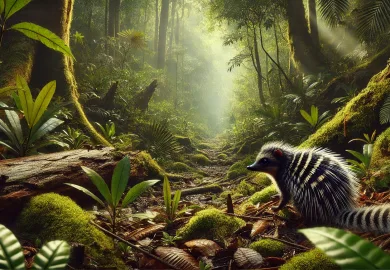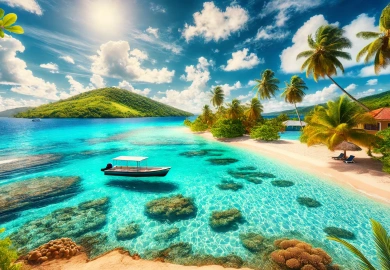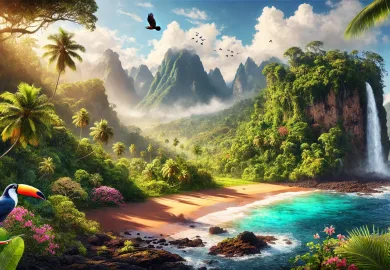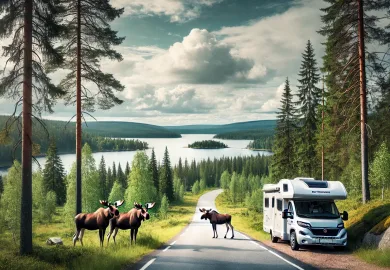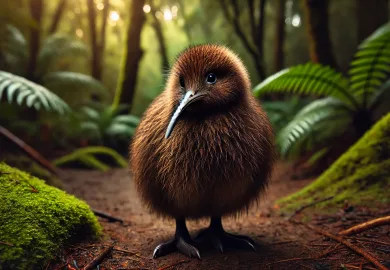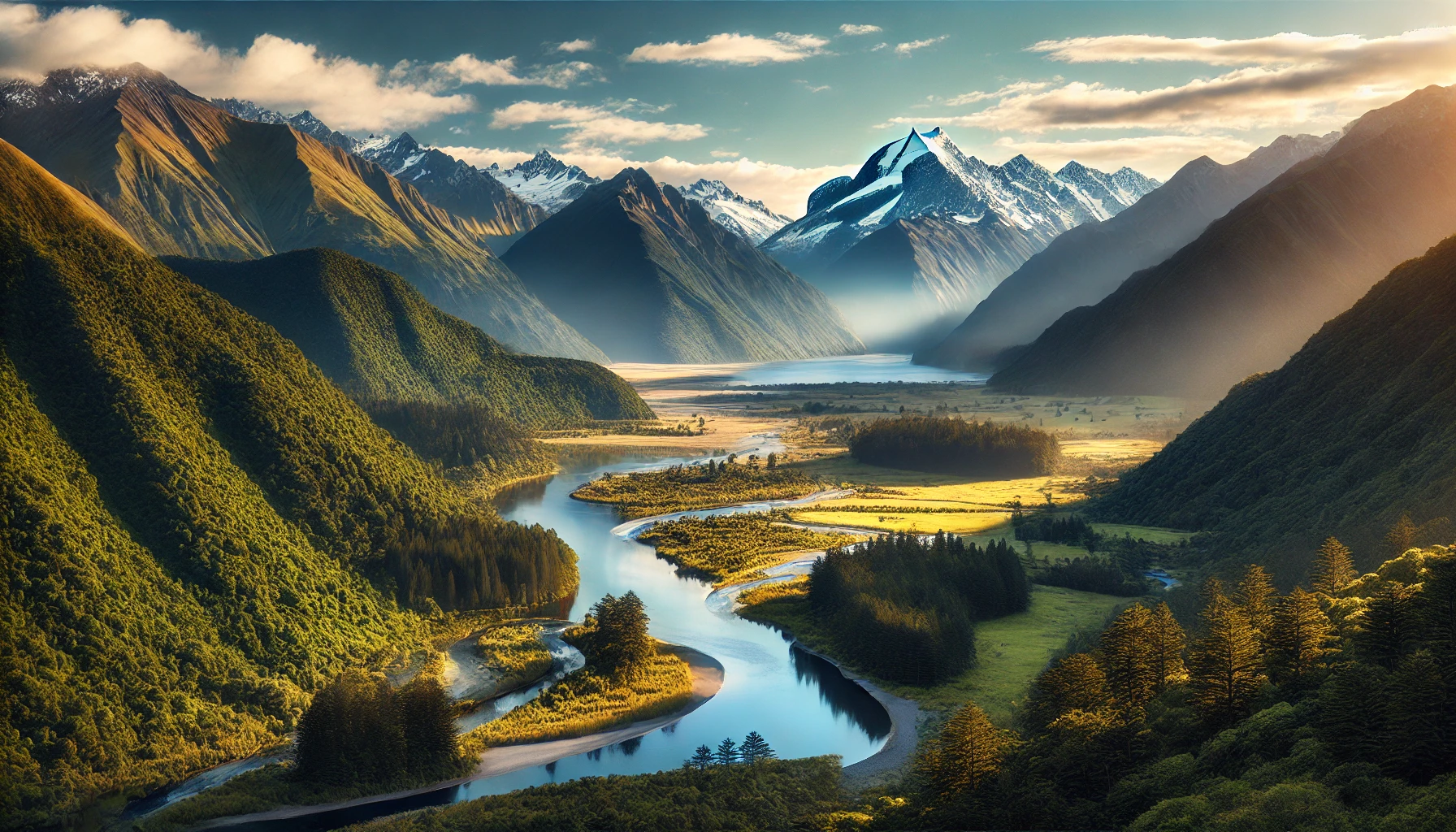
New Zealand, often referred to as the “Land of the Long White Cloud,” is a traveler’s paradise that offers a unique blend of stunning landscapes, thrilling adventures, and fascinating wildlife. Whether you’re an adrenaline junkie, a nature enthusiast, or someone seeking tranquility in nature’s embrace, New Zealand has something special for you. From the towering peaks of the Southern Alps to the vibrant culture of the Māori, New Zealand is a destination that never fails to captivate.
Explore New Zealand’s Breathtaking Landscapes
New Zealand is renowned for its diverse and dramatic landscapes, which are nothing short of cinematic. The country’s scenery ranges from snow-capped mountains and rolling green hills to pristine beaches and geothermal wonders.
One of the most iconic regions is Fiordland National Park, home to the famous Milford Sound. This breathtaking fjord, with its towering cliffs and cascading waterfalls, offers a surreal experience that is often described as otherworldly. The journey to Milford Sound itself is a visual feast, with lush rainforests, mirror lakes, and scenic viewpoints at every turn.
Further north, the volcanic plateau of Tongariro National Park presents a stark contrast. Here, the landscape is dominated by active volcanoes, emerald lakes, and lunar-like terrain. The Tongariro Alpine Crossing, often touted as one of the best day hikes in the world, takes you through this extraordinary environment, offering views that are both stunning and eerie.
For those who prefer coastal scenery, the Bay of Islands in the North Island is a must-visit. With over 140 subtropical islands, this region is a paradise for beach lovers and marine enthusiasts. The turquoise waters, sandy beaches, and abundant marine life make it a perfect spot for sailing, snorkeling, and simply unwinding.
Thrilling Adventures Await in New Zealand
New Zealand is a playground for adventurers, offering a wide range of activities that cater to all levels of thrill-seekers. The country’s diverse terrain makes it ideal for a variety of outdoor pursuits, from skydiving to bungee jumping.
Queenstown, often dubbed the “Adventure Capital of the World,” is the epicenter of adrenaline-pumping activities. Here, you can experience the rush of bungee jumping off the iconic Kawarau Bridge, or take a leap of faith with a skydive that offers panoramic views of Lake Wakatipu and the Remarkables mountain range. For those who prefer water-based adventures, jet boating on the Shotover River is an exhilarating experience that will get your heart racing.
If you’re into hiking, New Zealand has some of the best trails in the world. The Great Walks, a collection of multi-day hikes, take you through some of the country’s most spectacular landscapes. The Routeburn Track, for instance, offers stunning alpine views, lush forests, and crystal-clear rivers. The Abel Tasman Coast Track, on the other hand, combines beautiful coastal scenery with dense forests and golden beaches.
For a unique adventure, consider exploring the Waitomo Caves. This underground wonderland is famous for its glowworms, which light up the cave ceilings like a starry night sky. You can go black water rafting through these caves, navigating through the dark, narrow passages while admiring the natural light show above.
Encounter New Zealand’s Unique Wildlife
New Zealand’s wildlife is as diverse as its landscapes, with many species found nowhere else on Earth. The country’s isolation has led to the evolution of unique flora and fauna, making it a fascinating destination for wildlife enthusiasts.
One of the most famous residents of New Zealand is the kiwi, a flightless bird that has become a national symbol. Spotting a kiwi in the wild is a rare and special experience, but there are several sanctuaries and wildlife parks where you can get up close to these nocturnal creatures. The Otorohanga Kiwi House in the North Island is one such place, offering visitors the chance to see kiwis in a naturalistic setting.
Marine life in New Zealand is equally impressive. The coastal waters are home to dolphins, seals, and a variety of whale species, including the majestic orca. Kaikoura, located on the east coast of the South Island, is renowned for its whale-watching tours. Here, you can witness the awe-inspiring sight of sperm whales breaching the surface, often accompanied by playful pods of dolphins.
Birdwatchers will be in their element in New Zealand, as the country boasts a wide variety of endemic bird species. The vibrant kea, known for its intelligence and mischievous behavior, can often be found in the South Island’s alpine regions. Meanwhile, the rare and endangered kakapo, a nocturnal parrot, is one of the most unique birds in the world. Efforts to protect and conserve these species are ongoing, with several successful breeding programs in place.
Immerse Yourself in New Zealand’s Rich Culture
New Zealand’s cultural landscape is as rich and diverse as its natural one. The country’s indigenous Māori culture is an integral part of the national identity, offering visitors a unique opportunity to learn about ancient traditions and contemporary practices.
A visit to a Māori village is a must for anyone interested in understanding the cultural heritage of New Zealand. In Rotorua, you can experience a traditional pōwhiri (welcome ceremony), watch a captivating haka (war dance), and enjoy a hāngī feast, where food is cooked in an earth oven. Rotorua is also home to several geothermal wonders, which are deeply intertwined with Māori mythology and history.
Art and craftsmanship play a significant role in Māori culture, with intricate carvings, weaving, and tattooing (known as tā moko) being important expressions of identity and heritage. The Te Puia cultural center in Rotorua offers a comprehensive insight into these art forms, with live demonstrations and guided tours that delve into the history and meaning behind the artworks.
New Zealand’s colonial history has also shaped the country’s cultural landscape. The Treaty of Waitangi, signed in 1840 between the British Crown and various Māori chiefs, is a cornerstone of New Zealand’s history. Visiting the Waitangi Treaty Grounds in the Bay of Islands provides a deep insight into this pivotal event, with a museum and guided tours available to help you understand its significance and ongoing impact.
New Zealand’s cities, while small in comparison to global metropolises, offer a vibrant cultural scene with a mix of contemporary and traditional influences. Wellington, the capital city, is known for its thriving arts scene, with numerous galleries, museums, and theaters. The Museum of New Zealand Te Papa Tongarewa is a highlight, offering interactive exhibits that cover everything from natural history to contemporary art.
In conclusion, New Zealand is a destination that offers something for everyone. Whether you’re drawn by the stunning landscapes, the thrilling adventures, the unique wildlife, or the rich culture, this incredible country promises an unforgettable experience. So pack your bags and get ready to embark on the adventure of a lifetime in New Zealand!


